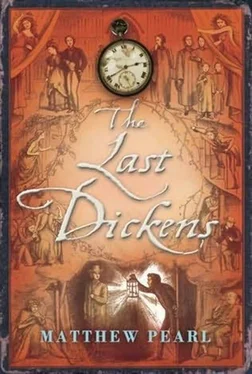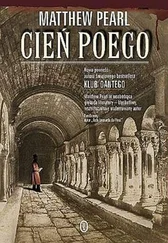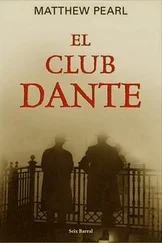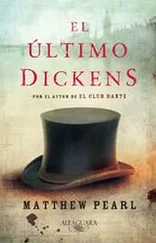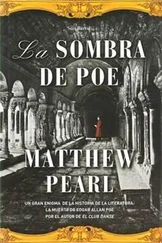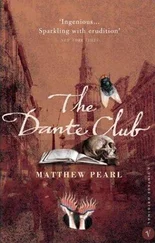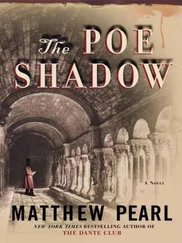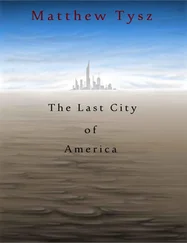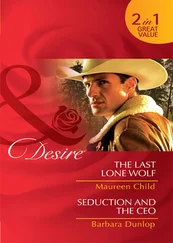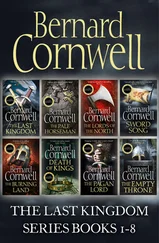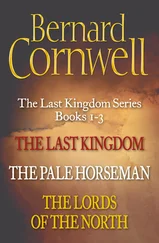Osgood slowly unwrapped the layers of paper, which were cold enough from the package's winter journey to be thin sheets of ice. Emerging from underneath it all, an iron bust of a distinguished Benjamin Franklin with his sidelong, wary, bespectacled gaze and pursed lips. “It's the statue from Harper's office,” Osgood said.
“That's the Major's prize possession!” Fields said with surprise and bewilderment.
“There's a note,” Osgood said, and then he read it aloud.
Congratulations on your ascendancy, Mr. Osgood. Take good care of this relic, for the time. I shall claim it back when I come to swallow your firm. Always watching, your friend, Fletcher Harper, the Major. At the top of the note was the emblem of the eternal Harper torch.
“Harper! How did he find out already? Get a hammer!” Fields declared. “Damn that Harper!”
Osgood shook his head calmly and gave an even smile. “No, my dear Fields. Let it stand here. I have a good feeling that it shall remain ours from this time onward.”

O N JUNE 9, 1870, CHARLES DICKENS DIED OF A STROKE AT fifty-eight years old at his family estate in the English countryside. He was arguably the most widely read novelist of his day. After his death, some observers blamed his deteriorated health on the arduous nature of his farewell tour of the United States, while others pointed the finger at the strain he was under from his last book. Before collapsing, he had written the first six of twelve installments planned for The Mystery of Edwin Drood , literary history's most famous unfinished novel.
The Last Dickens aims to portray Charles Dickens and the atmosphere surrounding his life and death as accurately as possible. Dickens's language, behavior, and personality as they appear in this novel incorporate many actual conversations and actions. The recreation of his landmark farewell tour of the United States (1867-68) is based on visits to sites like the Parker House, where Dickens lodged in Boston (now the Omni Parker House), and was enlarged by research into letters, playbills, newspaper accounts, and recollections by participants like George Dolby and James and Annie Fields. Thus, most of the tour's incidents depicted here are historical, including Dickens's rescue of the stranded animals and his visit with Oliver Wendell Holmes to the Harvard Medical College.
The stalking incident portrayed in the same chapters is based on an actual series of encounters involving a well-to-do Boston admirer named Jane Bigelow, from whom Louisa Barton is drawn and fictionalized. A tax collector blackmailed the Dickens staff while plotting their arrests for evasion of the federal entertainment tax. Dickens's pocket diary for 1867 indeed disappeared in New York around the same time, turning up without explanation more than fifty years later at an auction (today it forms part of the New York Public Library's Berg Collection).
Historical characters in this novel include James R. Osgood, the Fieldses, the Harpers, Frederic Chapman, John Forster, Georgina Hogarth, Frederick Leypoldt, Dickens's tour staff-Dolby, Henry Scott, Richard Kelly, George Allison-and Dickens's children-Frank, Katie, Mamie-all of whom are re-created here from investigation into their personal and professional lives. Fictional characters, including Tom Branagan, Rebecca and Daniel Sand, Arthur Grunwald, Jack Rogers, Ironhead Herman, and Marcus Wakefield, are developed from research into the era. Rebecca reflects the real achievements and challenges in a new class of single working women in mid- to late-nineteenth-century Boston as well as that of divorced women. The international opium trade and its manifestations in England and British India as portrayed here, as well as the book trade, reflect historical turning points.
The firm of Fields, Osgood & Co. became the authorized American publisher of Charles Dickens in 1867, a move that ignited controversy with rival publisher Harper & Brothers. Dickens did offer to tell Queen Victoria the story of The Mystery of Edwin Drood ahead of the public, but she apparently declined. With Drood incomplete, theatrical dramatizations and “spiritual” sequels appeared and multiplied. Rumors began that Dickens had completed more of the novel than what had been made public. While Osgood's attempt in The Last Dickens to trace clues to the rest of Dickens's novel is a product of imagination, many of its key elements grew out of history and scholarship. Dickens closely modeled his novel's opium den and characters on an actual London establishment he visited that was managed by a woman named Sally, or “Opium Sal;” also, possible sources for his story of Edwin Drood's disappearance include a Rochester legend about human remains of a man's nephew found in the walls of his house. The landlord of the Falstaff Inn, located across from Gadshill estate, was William Stocker Trood, who had a son named Edward. Dickens's statue, Turk Seated Smoking Opium , was sold at auction along with his other belongings at Christie, Manson & Woods in London on July 8, 1870. The statue, along with the quill pen Dickens used to write Drood , can be viewed today at the Charles Dickens Museum in London; his walking stick with the screw in its handle is at Houghton Library, Harvard University.
The Mystery of Edwin Drood was published in book form in late 1870 in London by Chapman & Hall and in Boston by Fields, Osgood & Co.; the Boston publication was followed by an unauthorized edition from Harper & Brothers in New York. As shown here, the end of 1870 saw Fields retire and Osgood becoming proprietor of James R. Osgood & Co. In 1926, Chapman & Hall indicated that it still kept their original agreement with Dickens for The Mystery of Edwin Drood locked in a safe, but would not share it. Less than a year later, Chapman & Hall claimed they no longer could locate the agreement. In the many years since Dickens's death, various pieces of new evidence have shed little light on his intentions for The Mystery of Edwin Drood. The questions about the novel and its ending are as strong today as ever.

I N WRITING A NOVEL SET IN A CUTTHROAT ERA OF THE PUBLISHING industry, I am blessed that behind this project there are such generous publishing professionals: my literary agent, Suzanne Gluck-endlessly dedicated and dexterous-my editor, Jennifer Hershey-insightful, creative, and challenging-and a zealous champion in Gina Centrello. I'm fortunate to have benefited from the further input and guidance of Stuart Williams at Harvill Secker. Support and imagination came from so many individuals: At Random House, Avideh Bashirrad, Lea Beresford, Sanyu Dillon, Benjamin Dreyer, Richard Elman, Laura Ford, Jennifer Huwer, Vincent La Scala, Sally Marvin, Libby McGuire, Annette Melvin, Courtney Moran, Gene Mydlowski, Jack Perry, Tom Perry, Carol Schneider, Judy Sternlight, Beck Stvan, and Jane von Mehren, as well as Amy Metsch at Random House Audio; at Harvill Secker, Matt Broughton, Liz Foley, Lily Richards; at William Morris Agency, Sarah Ceglarski, Georgia Cool, Raffaella De Angelis, Michelle Feehan, Tracy Fisher, Eugenie Furniss, Evan Goldfried, Alicia Gordon, Erin Malone, Elizabeth Reed, Frances Roe, Cathryn Summerhayes, Liz Tingue.
I've relied on my superb reader's circle for judgment and ideas, once again composed of Benjamin Cavell, Joseph Gangemi, Cynthia Posillico, and Ian Pearl-who have proven they are impervious to being bothered by borrowers of their genius-and joined this time around by additional brilliant talents Louis Bayard and Eric Dean Bennett. Gabriella Gage provided invaluable assistance in a cross section of complex research, fortifying the project with her persistence, resourcefulness, and patience. Susan and Warren Pearl, Marsha Wiggins, Scott Weinger, and Gustavo Turner were present throughout to encourage both work and rest. And my gratitude to Tobey Pearl, who from the first to the last word helped me through all the hills and valleys of the process.
Читать дальше
